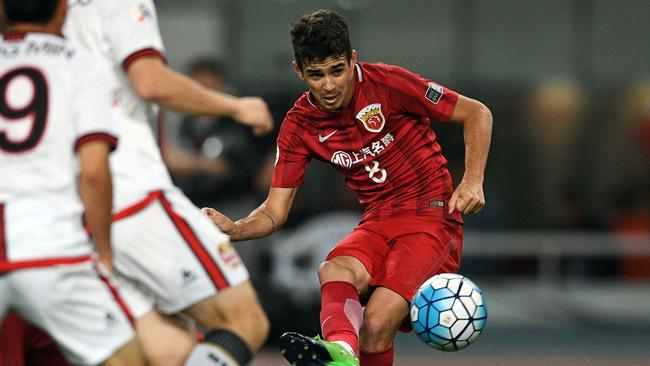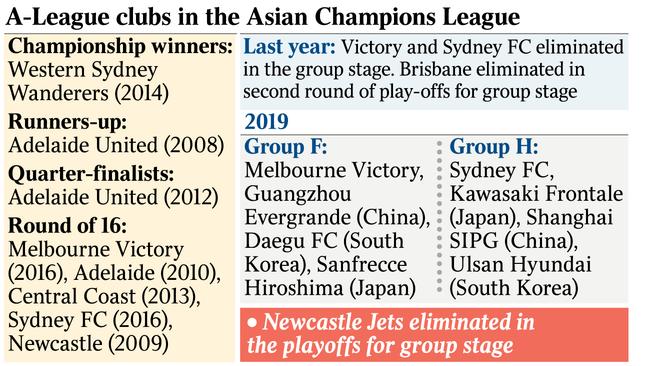Asian giants make Victory and Sydney look like ACL minnows
Melbourne Victory and Sydney FC will enter the Asian Champions League outgunned by some genuine giants.

It doesn’t have anywhere near the profile of its European equivalent, but the Asian Champions League is the most important club competition in the region.
You wouldn’t know it, however, as A-League champions Melbourne Victory and Premiers Plate winners Sydney FC prepare for another tilt at the tournament this week.
Victory kick off their eighth campaign in Asia when they play South Koreans, Daegu FC at AAMI Park tonight while Sydney FC follow up 24 hours later for their sixth attempt against Koreans Ulsan Hyundai at Jubilee Stadium.
It is instructive that while there is some hope that the two giants of the club game here can get through to the knockout stage, their chances of going deeper into the tournament are regarded as slim. Both clubs have only got through the group stage once.
History shows that the salary-capped Australian teams struggle to compete against most of the cashed up heavyweights of Japanese, Korean and Chinese football, where the spend on a single player could buy and sell all 10 A-League teams four times over.
You only have to look at the Brazilian attacking midfielder, Oscar who plays for Shanghai SIPG and will come up against Sydney on April 10.
The 27-year-old former Chelsea star, capped 47 times for his country, cost SIPG a staggering $120 million (an Asian transfer record) when he signed in 2017 and whose weekly wage is $800,000. His teammate Hulk, another Brazilian international, signed in 2016 for $80m and is reportedly on $500,000 a week.

The Chinese government and the Chinese Football Association have since instigated stringent measures designed to slow down the mind boggling spending on overseas players in order to protect the economy and the national team set-ups.
Still, the Chinese Super League clubs, notably Shanghai SIPG and Guangzhou Evergrande remain on-field juggernauts.
Throw in the quality of the Japanese clubs and, to a lesser extent, the Koreans and it is not hard to see how difficult it is for Australian clubs, which are limited to a $3.063m salary cap for a 23-man squad and two marquees outside of the cap, to compete on a level playing field.
There has also been the issue of A-League clubs struggling with the dual schedules of the ACL and the domestic competition, though Football Federation Australia have tried to look after them this season by adjusting the local draw to ensure they have more rest days in between matches when travelling to or from Asia.
Just how hard it is to compete in Asian football was seen during the 2017 series when Australian clubs managed just four wins from 18 games. Along they way they conceded a combined 51 goals with Western Sydney Wanderers and Brisbane Roar both copping six-goal defeats at one stage.
It makes the Wanderers’ win in the ACL in 2014 one of the most remarkable feats in Australian club history. No A-League club has gone close since as they have largely struggled to get out of the group stage. Victory and Sydney both made it to the round of 16 in 2016 but no Australian side has got past the group stage in the past two years. Maybe it is the lack of success or Australians fans simply lack a proper understanding of the dynamics and quality of Asian football, but it is also a reality that the ACL is a tournament that hasn’t really captured the imagination here.
Victory coach Kevin Muscat acknowledged just how difficult it is for Australian clubs to compete at this level.
“The way it has evolved has been rapid,” Muscat said during yesterday’s official game eve press conference. “You take into consideration the nations we’re up against, the influx of foreigners in China … it has blown the competition apart.’’



To join the conversation, please log in. Don't have an account? Register
Join the conversation, you are commenting as Logout